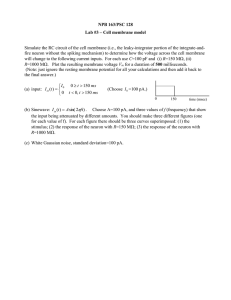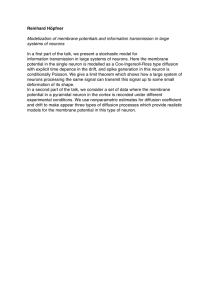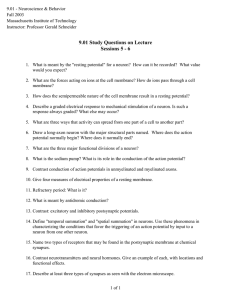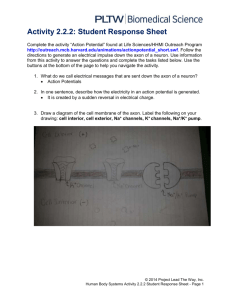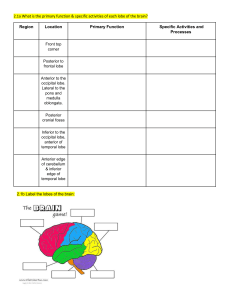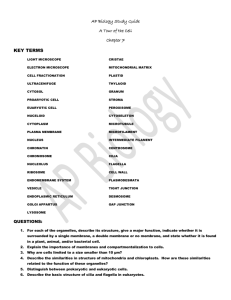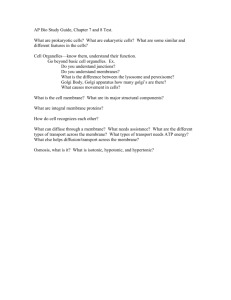Review sheet for cells, nervous and endocrine response
advertisement
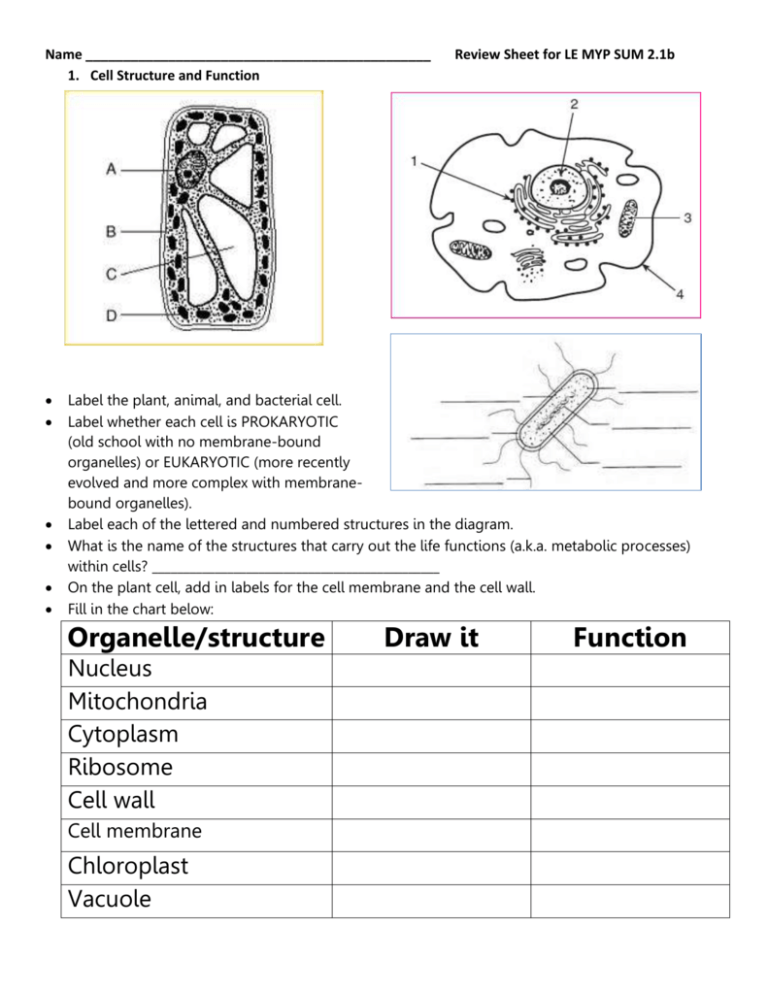
Name ______________________________________________ 1. Cell Structure and Function Review Sheet for LE MYP SUM 2.1b Label the plant, animal, and bacterial cell. Label whether each cell is PROKARYOTIC (old school with no membrane-bound organelles) or EUKARYOTIC (more recently evolved and more complex with membranebound organelles). Label each of the lettered and numbered structures in the diagram. What is the name of the structures that carry out the life functions (a.k.a. metabolic processes) within cells? ______________________________________________ On the plant cell, add in labels for the cell membrane and the cell wall. Fill in the chart below: Organelle/structure Nucleus Mitochondria Cytoplasm Ribosome Cell wall Cell membrane Chloroplast Vacuole Draw it Function 2. Cell Membrane Go and find that binder page we did where we diagrammed the cell membrane. Based on your diagram, record some facts about the cell membrane. FACT 1: _________________________________________________________________ FACT 2: _________________________________________________________________ FACT 3: _________________________________________________________________ FACT 4: _________________________________________________________________ FACT 5: _________________________________________________________________ 3. Nerve Cells (Neurons) and Endocrine Cells Communicate to Maintain __________________________ Both body systems are in charge of… Body System Speed of Communication Chemical Messenger Molecule How Message Travels Some Organ Examples Fast!!!!!!!! s-l-o-w… Neurotransmitters like dopamine Secreted from 1 neuron to the other through the synapse Hormones like insulin or testosterone Secreted from endocrine glands (e.g. pancreas) into bloodstream Label the parts of the neuron below. Draw in a second neuron for the first neuron to communicate with. Draw in some chemical messengers (a.k.a. neurotransmitters) being secreted at the axon terminals of the first neuron. Finally, describe how the impulse travels (i.e. where is it electrical? Where is it chemical?) Explain the process occurring in this diagram using the following words: axon terminal, cell membrane, chemical messenger molecule, dendrites, receptor molecules, specificity. Explain the process occurring in this diagram. HARD WORK PAYS OFF…EVENTUALLY!
